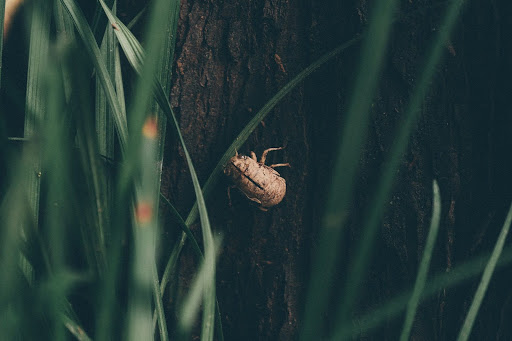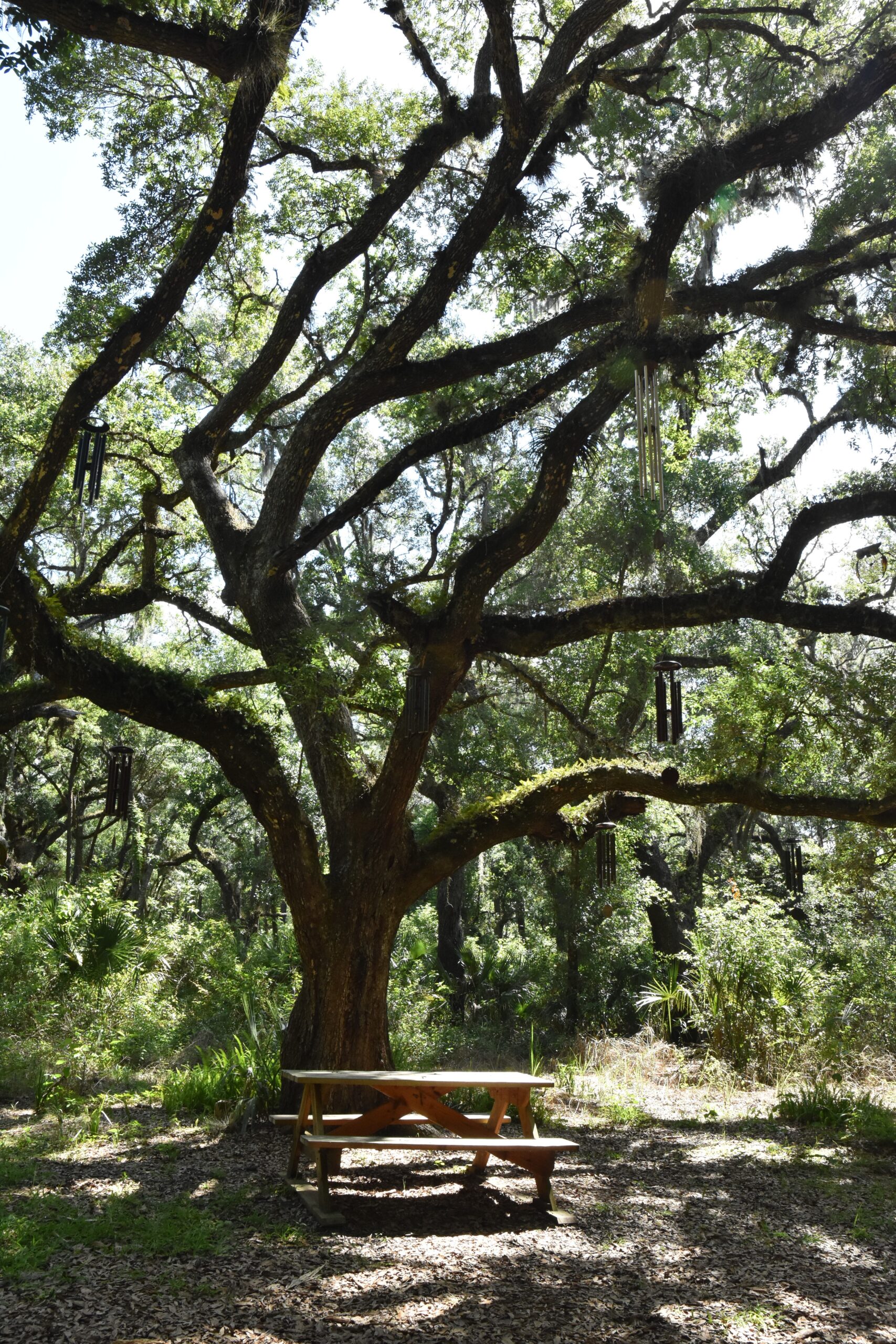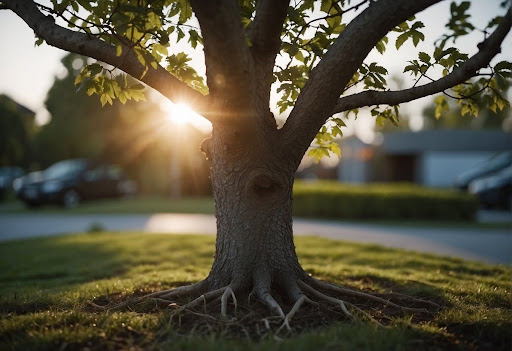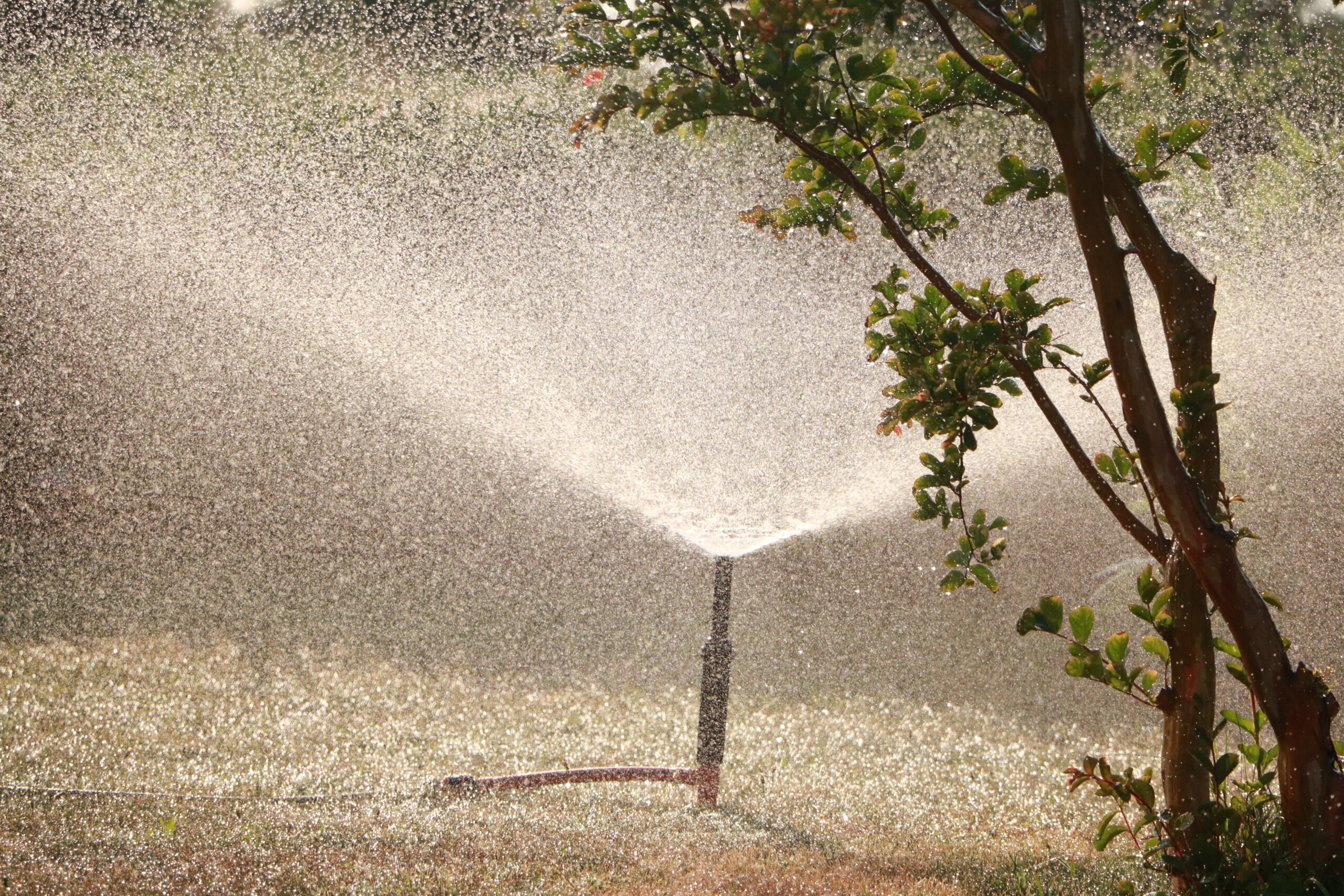
Date August 30, 2023
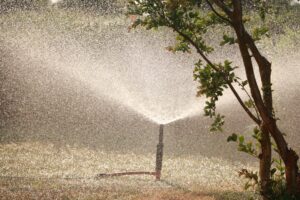
Grapevine, Texas is home to many beautiful trees that require proper care and maintenance to thrive. One of the most important aspects of tree care is proper watering. Trees need water to survive and grow, but giving them too much or too little can be detrimental to their health. Therefore, it is essential to know how to water trees properly in Grapevine, Texas.
When it comes to watering trees, there are several factors to consider, such as the type of tree, the age of the tree, the soil type, and the weather conditions. Generally, trees need about 10 gallons of water per week for every inch of trunk diameter. However, this can vary depending on the tree species and the weather conditions. Overwatering can lead to root rot and other issues, while underwatering can cause stress and damage to the tree. Therefore, it is crucial to find the right balance and water trees properly to ensure their health and longevity.
In this article, we will provide tips and guidelines on how to water trees properly in Grapevine, Texas. We will cover topics such as when to water, how much water to give, and different watering methods. By following these tips, you can help your trees thrive and contribute to the beauty and health of the environment.
Understanding the Importance of Watering Trees
Watering trees properly is vital to promote healthy growth and maintain a vibrant urban forest in Grapevine, Texas. Trees need water to survive, just like any other living organism. Water helps trees to absorb nutrients from the soil, maintain their shape, and produce oxygen. Without enough water, trees may become stressed, and their growth may slow down, making them more susceptible to diseases and pests.
North Texas, including Grapevine, is known for its hot and dry climate, which can be challenging for trees. During the summer months, temperatures can easily reach over 100°F, and rainfall is often scarce. This makes it crucial for tree owners to understand the importance of watering their trees regularly.
The amount of water trees need depends on various factors, such as their age, species, soil type, and weather conditions. Generally, younger trees require more water than mature trees, and trees with shallow roots, such as maples and birches, need more frequent watering than trees with deep roots, such as oaks and pines.
To ensure that trees receive enough water, it is essential to water them deeply and infrequently. This means watering the soil around the tree’s root zone, not just the trunk or leaves, and allowing the water to soak in slowly. Using drip irrigation or a soaker hose is the most efficient way to water trees, as it delivers water directly to the root zone and minimizes water loss through evaporation.
In addition to proper watering techniques, mulching can also help maintain soil moisture and regulate soil temperature around the tree’s root zone. Applying a layer of organic mulch, such as wood chips or shredded leaves, can help prevent water loss and suppress weed growth. However, it is essential to avoid piling mulch against the tree’s trunk, as this can cause root rot and other problems.
By understanding the importance of watering trees and following proper watering techniques, tree owners can help maintain a healthy and vibrant urban forest in Grapevine, Texas.
Identifying Tree Types and Their Water Needs
Before watering trees, it is important to identify the type of tree and its water needs. Different tree types have varying water requirements, so understanding the characteristics of each tree is crucial in determining the appropriate watering schedule.
Young Trees
Young trees, typically those less than three years old, require more frequent watering than mature trees. Watering should be done once or twice a week, depending on the weather conditions. It is important to ensure that the soil around the tree is moist but not waterlogged. Overwatering can lead to root rot and other diseases.
Established Trees
Established trees, those that are three to five years old, require less frequent watering than young trees. Watering should be done once a week, depending on the weather conditions. It is important to water deeply and slowly to ensure that the water reaches the roots of the tree.
Mature Trees
Mature trees, those that are more than five years old, require even less frequent watering than established trees. Watering should be done once every two weeks, depending on the weather conditions. It is important to water deeply and slowly to ensure that the water reaches the roots of the tree.
Newly Planted Trees
Newly planted trees require more frequent watering than established trees. Watering should be done every day for the first week, every other day for the second week, and twice a week for the third week. After the third week, the tree can be watered once a week, depending on the weather conditions.
Age of the Tree
The age of the tree is an important factor in determining its water needs. Young trees require more frequent watering than established or mature trees. Newly planted trees require more frequent watering than established trees. It is important to water deeply and slowly to ensure that the water reaches the roots of the tree.
In summary, identifying the type of tree and its water needs is crucial in determining the appropriate watering schedule. Young trees require more frequent watering than established or mature trees, while newly planted trees require more frequent watering than established trees. It is important to water deeply and slowly to ensure that the water reaches the roots of the tree.
Assessing Soil Conditions and Types
Before watering grapevines or trees, it is important to assess the soil conditions and types in the area. Soil conditions can affect how much water is needed and how often it should be applied.
The root system of grapevines and trees is one of the most important factors to consider when assessing soil conditions. The root system of grapevines is typically shallow, with most roots located within the top 3 feet of soil. Trees, on the other hand, can have deep root systems that extend well beyond the drip line.
Soil moisture is another important factor to consider when watering grapevines and trees. Sandy soils tend to drain quickly and may require more frequent watering, while clay soils hold water longer and may require less frequent watering. It is important to monitor soil moisture levels and adjust watering accordingly.
Compost can be used to improve soil moisture retention and nutrient availability. Adding compost to sandy soils can help improve water retention, while adding compost to clay soils can help improve drainage and aeration.
Soil composition is also an important factor to consider when assessing soil conditions. Soil pH can affect nutrient availability and plant growth. Grapevines prefer a soil pH in the range of 5.5 to 6.5, while trees can tolerate a wider range of pH levels.
In summary, assessing soil conditions and types is an important step in properly watering grapevines and trees. Factors such as root systems, soil moisture, compost, and soil composition can all affect how much water is needed and how often it should be applied.
Watering Techniques for Different Tree Types
Different tree types have different watering requirements. Understanding these requirements is essential to ensure that your trees receive the right amount of water they need. Here are some watering techniques for different tree types:
Deciduous Trees
Deciduous trees lose their leaves every fall, and they require a moderate amount of water. To water deciduous trees, use a soaker hose or a garden hose to water the tree’s root zone slowly and deeply. Slow and deep watering allows the soil to absorb water, which helps the tree’s roots grow deeper into the soil. Watering too frequently or too shallowly can lead to root rot and other problems.
Evergreen Trees
Evergreen trees retain their needles throughout the year, and they require more water than deciduous trees. To water evergreen trees, use a drip irrigation system, soaker hose, or a garden hose to water the tree’s root zone slowly and deeply. Deep watering encourages the tree’s roots to grow deeper into the soil, which helps the tree withstand drought conditions.
Fruit Trees
Fruit trees require a consistent supply of water to produce healthy and abundant fruit. To water fruit trees, use a drip irrigation system or a garden hose to water the tree’s root zone slowly and deeply. Water the tree once or twice a week, depending on the weather conditions. Avoid overwatering, as it can lead to root rot and other problems.
Young Trees
Young trees require more frequent watering than mature trees because their root systems are not fully developed. To water young trees, use a garden hose or a watering can to water the tree’s root zone slowly and deeply. Water the tree every 2-3 days, depending on the weather conditions. Avoid overwatering, as it can lead to root rot and other problems.
Conifers
Conifers are evergreen trees that require a moderate amount of water. To water conifers, use a soaker hose or a garden hose to water the tree’s root zone slowly and deeply. Water the tree once or twice a week, depending on the weather conditions. Avoid overwatering, as it can lead to root rot and other problems.
In summary, watering trees properly is essential to ensure their health and longevity. Different tree types have different watering requirements, and understanding these requirements is essential to provide the right amount of water they need. Using the right watering techniques, such as slow and deep watering, consistent watering, and drip irrigation systems, can help ensure that your trees receive the right amount of water they need to thrive.
Understanding the Root System and Watering
Proper watering is essential for the growth and development of trees, and it all starts with understanding the root system. The root system is responsible for anchoring the tree in place, absorbing water and nutrients, and storing reserves for future use. In Grapevine, Texas, where hot and dry weather conditions are common, it is crucial to ensure that the root system is healthy and well-watered.
The root system of a tree is typically divided into two parts: the taproot and the lateral roots. The taproot grows vertically downward, while the lateral roots spread out horizontally. The root system is also divided into different zones, including the absorption zone, the transport zone, and the root cap. The absorption zone is where the majority of water and nutrients are absorbed, while the transport zone is responsible for moving these substances to other parts of the tree.
When watering trees, it is important to focus on the root zone, which is the area immediately surrounding the tree’s root ball. This is where the majority of the roots are located, and where water and nutrients are most needed. Overwatering can be just as harmful as underwatering, as it can lead to root rot and other diseases. It is recommended to water deeply and infrequently, allowing the soil to dry out slightly between watering sessions.
There are several methods for watering trees, including using a sprinkler system, a soaker hose, or a drip irrigation system. Each method has its advantages and disadvantages, and the choice will depend on factors such as the size of the tree, the soil type, and the water source. It is important to ensure that the water is delivered directly to the root zone, rather than being wasted on the surrounding soil.
In conclusion, proper watering is crucial for the health and growth of trees in Grapevine, Texas. Understanding the root system and the importance of the root zone is the first step in ensuring that trees receive the water and nutrients they need to thrive. By watering deeply and infrequently, and using the appropriate watering method, homeowners and landscapers can help to maintain healthy and beautiful trees for years to come.
Effects of Weather and Climate on Watering
Proper watering of trees is essential for their growth and survival. However, the amount of water needed by trees varies depending on weather and climate conditions. In Grapevine, Texas, where drought conditions are common, it is important to water trees adequately to prevent wilting and damage.
During hot and dry weather conditions, trees lose water through evaporation from their leaves and stems, which can cause them to wilt. In such conditions, it is important to water trees deeply and frequently to ensure that the water reaches the roots and keeps the soil moist.
In areas with a dry climate like Grapevine, Texas, it is important to monitor the moisture level of the soil regularly. The soil should be moist, not soggy, to ensure proper growth of the tree. If the soil is dry to the touch, the tree needs water.
It is also important to note that overwatering can be just as harmful as underwatering. Overwatering can cause root rot and other diseases that can damage the tree. Therefore, it is important to water trees deeply but infrequently to ensure that the soil has time to dry out between waterings.
In summary, weather and climate conditions play a crucial role in the watering needs of trees. In dry weather and drought conditions, it is important to water trees deeply and frequently to prevent wilting and damage. However, overwatering can also be harmful to the tree. Therefore, it is important to monitor the moisture level of the soil and water trees deeply but infrequently to ensure proper growth and health.
Signs of Over-Watering and Under-Watering
Proper watering is essential for the health and growth of trees. Over-watering or under-watering can have detrimental effects on the tree’s health and can even lead to its death. It is important to understand the signs of over-watering and under-watering to ensure that your trees receive the right amount of water.
Signs of Over-Watering
Over-watering can lead to waterlogged soil and root rot, which can cause the tree to decline. Here are some signs of over-watering to look out for:
- Wilting leaves: While it may seem counterintuitive, over-watering can actually cause leaves to wilt. This is because the roots are not able to absorb oxygen from waterlogged soil, which can cause the leaves to wilt and turn yellow or brown.
- Stunted growth: Over-watering can also lead to stunted growth as the roots are not able to absorb the nutrients they need to grow.
- Canopy decline: If the tree’s canopy is declining, it may be a sign of over-watering. This is because waterlogged soil can prevent the roots from absorbing the nutrients they need to support the tree’s canopy.
Signs of Under-Watering
Under-watering can cause the tree to become stressed and can lead to leaf drop and even death. Here are some signs of under-watering to look out for:
- Wilting leaves: Leaves that are wilting or turning brown can be a sign of under-watering. This is because the tree is not receiving enough water to support its growth and development.
- Stunted growth: Like over-watering, under-watering can also lead to stunted growth as the tree is not receiving the nutrients it needs to grow.
- Dry soil: If the soil around the tree is dry and cracked, it may be a sign of under-watering. This is because the tree is not receiving enough water to keep the soil moist.
In conclusion, it is important to monitor your trees for signs of over-watering and under-watering to ensure that they receive the right amount of water. By understanding these signs, you can take the necessary steps to ensure that your trees remain healthy and vibrant.
The Role of Mulching in Watering Trees
Mulching is a crucial component of watering trees in Grapevine, Texas. It helps to retain moisture in the soil, regulate soil temperature, and suppress weed growth. Mulch also provides organic matter to the soil as it decomposes, which improves soil structure and fertility.
When it comes to mulching, it’s important to keep a few things in mind. First, make sure to apply mulch correctly. Spread it in an even layer about 3 to 4 inches deep as widely as possible around the trunk, but not touching it. This will help hold the moisture in the soil and prevent the mulch from becoming a breeding ground for pests and diseases.
Second, choose the right type of mulch. Organic mulch, such as wood chips, bark, or leaves, is ideal because it decomposes over time and adds nutrients to the soil. Inorganic mulch, such as gravel or stones, does not decompose and can actually absorb heat and dry out the soil.
Third, maintain the mulch regularly. As the mulch decomposes, it will need to be replenished to maintain the proper depth. Also, make sure to remove any weeds or grass that may grow through the mulch, as they can compete with the tree for water and nutrients.
In summary, mulching is an essential part of watering trees in Grapevine, Texas. It helps to conserve moisture, regulate soil temperature, suppress weed growth, and improve soil fertility. By applying mulch correctly, choosing the right type of mulch, and maintaining it regularly, you can ensure that your trees receive the water they need to thrive.
Tree Health and Care
Properly watering trees is essential for their growth and health. Trees need water to survive and thrive, but overwatering can be just as harmful as underwatering. Grapevine, Texas, is known for its hot and dry summers, making it even more important to give trees the right amount of water.
Healthy trees can resist pests and diseases better than unhealthy ones. A certified arborist can help identify and treat any issues that may arise. However, proper watering is the first step in maintaining tree health.
When watering trees, it’s important to water deeply and infrequently. This helps the roots grow deeper into the soil, making the tree more resilient to drought. Shallow watering can lead to shallow root growth, making the tree more susceptible to stress and disease.
Pests, such as aphids, can also damage trees. Aphids are small insects that feed on the sap of trees and can cause leaves to curl and turn yellow. Fungus can also be a problem, especially in humid climates like Grapevine. Proper watering can help prevent fungus growth by keeping the soil moist but not overly wet.
In summary, proper watering is crucial for tree health and growth. A certified arborist can help identify any issues and provide guidance on proper care. By taking care of your trees, you can ensure they remain healthy and beautiful for years to come.
Water Conservation Techniques
In Grapevine, Texas, water conservation is essential due to the frequent droughts that affect the area. Watering trees properly is crucial for their survival, but it is also important to conserve water while doing so. Here are some water conservation techniques that can be used when watering trees:
- Mulching: Mulching is an excellent way to conserve water and keep the soil moist. Adding a layer of mulch around the base of the tree helps to prevent evaporation and keeps the soil cool. Mulch also helps to suppress weed growth, which can compete with the tree for water.
- Watering Schedule: It is important to water trees deeply and infrequently rather than frequently and shallowly. This allows the water to penetrate deep into the soil and reach the roots. A good rule of thumb is to water trees once a week, giving them about an inch of water.
- Rain Sensors: Installing a rain sensor to the irrigation system is a water conservation technique that can help save water. Rain sensors detect when it is raining and shut off the irrigation system, preventing unnecessary watering.
- Drip Irrigation: Drip irrigation is an efficient way to water trees because it delivers water directly to the roots. This method of irrigation reduces water waste and helps to conserve water.
- Watering Restrictions: It is important to follow watering restrictions in Grapevine, Texas, to conserve water. Irrigation or watering of any lawn or landscape is prohibited between the hours of 10:00 am and 6:00 pm. Additionally, Lake Grapevine’s normal conservation pool elevation is 535 feet, and watering restrictions may be put in place during drought conditions.
By following these water conservation techniques, it is possible to water trees properly while also conserving water.
Conclusion
Properly watering trees is essential for their health and longevity. In Grapevine, Texas, where summers can be hot and dry, it is especially important to ensure that trees receive enough water. By following the tips outlined in this article, residents can help their trees thrive.
Some key takeaways include:
- Water trees deeply and infrequently, rather than shallowly and frequently.
- Use a soaker hose or drip irrigation system to deliver water directly to the tree’s root zone.
- Water trees in the early morning or late evening to avoid evaporation.
- Adjust watering frequency based on weather conditions, soil type, and tree species.
- Avoid overwatering, which can lead to root rot and other problems.
By taking these steps, residents can help their trees withstand drought and other stresses, and enjoy the many benefits that trees provide, such as shade, beauty, and clean air. For more information on caring for trees in Grapevine, Texas, residents can consult with a local arborist or tree care professional.
Overall, proper watering is just one part of a comprehensive tree care program. Regular pruning, fertilization, and pest management are also important for maintaining healthy trees. By investing in the care of their trees, residents can enjoy the many benefits that trees provide for years to come.
Do you know how to water trees properly in Grapevine, Texas? It’s more than just turning on the hose. Proper tree care, especially in our unique climate, can be complex. But don’t worry! With TreeNewal, a trusted expert serving the Dallas and Fort Worth Metroplex since 2017, you’re in great hands. Dive deep into our latest blog to master the art of watering and ensure your trees not only survive but thrive!

